Mistle Thrushes and mistletoe
There’s a Grey Squirrel barking in alarm in this Devon churchyard. I’ve not heard one bark like that before. “Must be a predator”, I think. “Probably a bird of prey.” Then I think of wildlife programmes where monkeys give alarm calls when they see hunting big cats. The calls are understood by other species who also take avoiding action. Inter-species communication; I can understand a Grey Squirrel.
What I want to know is: what’s the human equivalent when we see a potential predator?
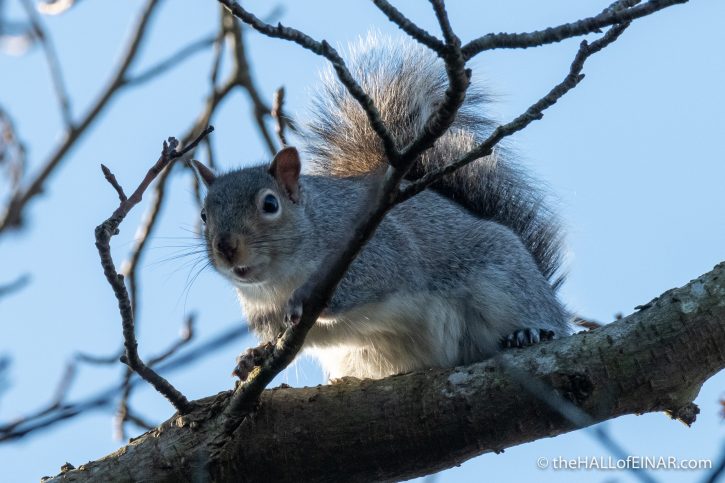
It’s very loud.
I’m here to see the Mistle Thrushes. I’d love to see them eating the Mistletoe berries because, you know.
The Mistletoe is too high and blanketed in branches. There’s a gap between the trees and I manage to get one of the Thrushes flying between a Yew and a Lime:
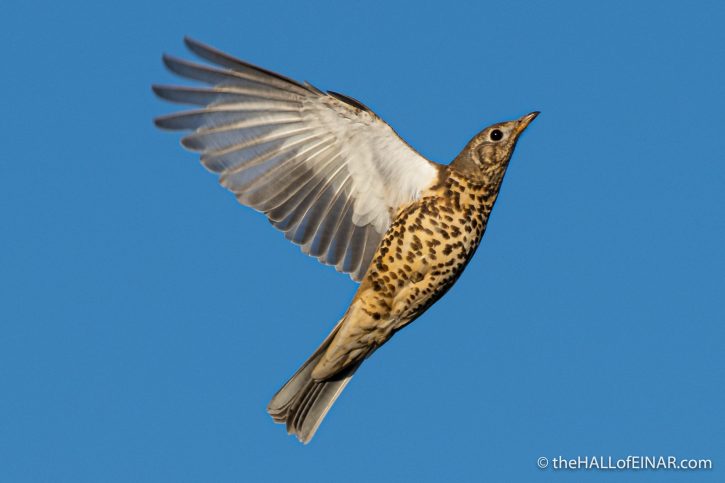
Aren’t they fabulous? This one’s a Missile Thrush:
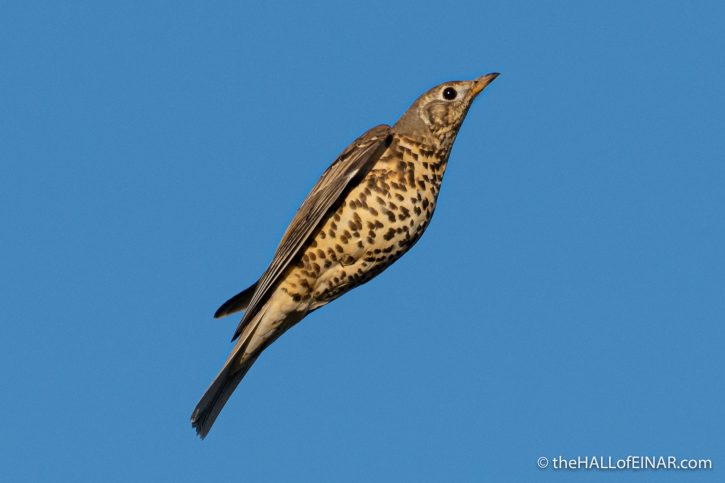
The Thrushes come every December on their way south and stop off for a feast. There are a smaller number of Redwings here too:
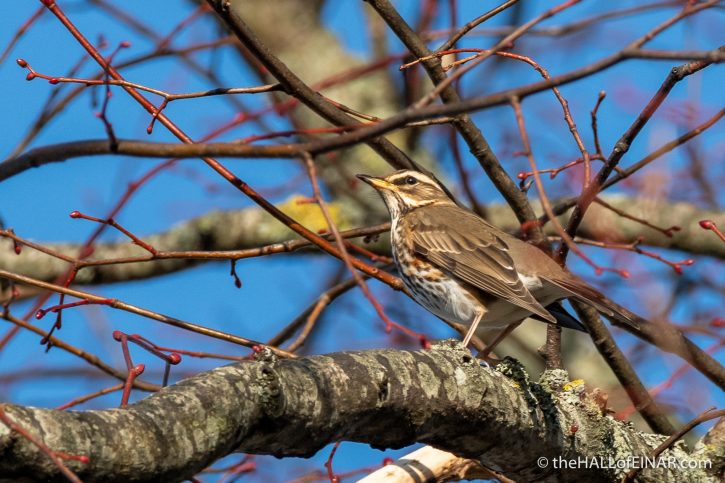
They’re smaller and streaked rather than speckled.
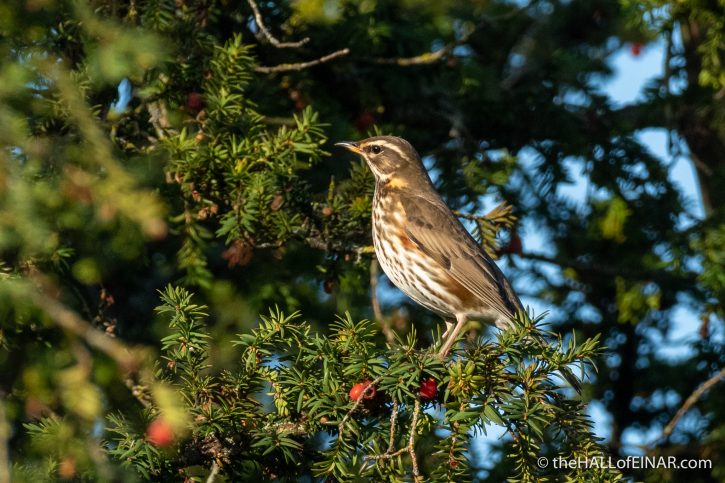
Feathers are exceptional: how strong yet how light they are:
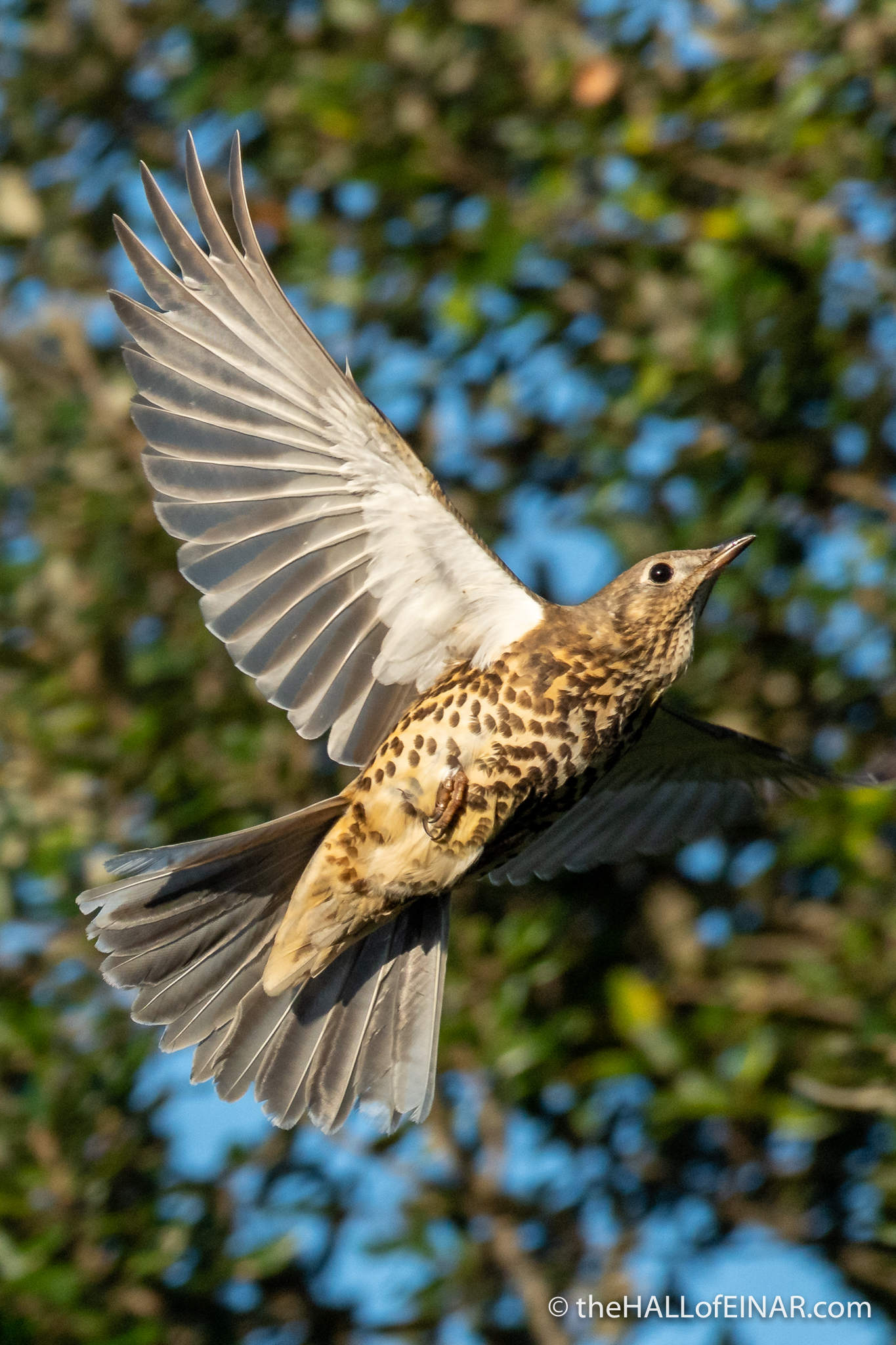
The Mistle Thrushes are very observant and I have to stand still, partly hidden by cars in the churchyard to get within range of them.
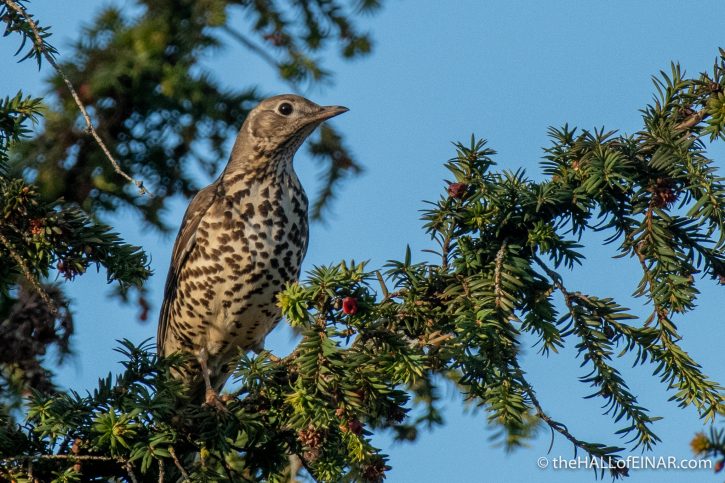
Here’s one flying from the Yew to the Lime with a Yew aril.
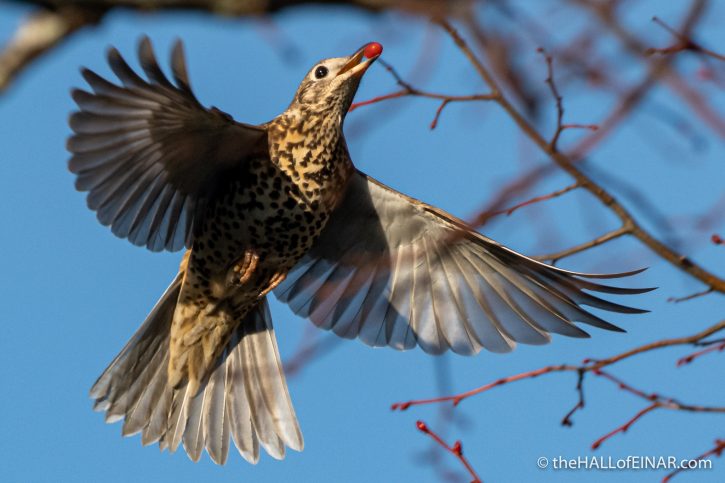
Then, as I try to get closer to them, they all fly off. It’s only then that I see there’s a male Sparrowhawk at the top of the Lime tree. That Squirrel was right all along.